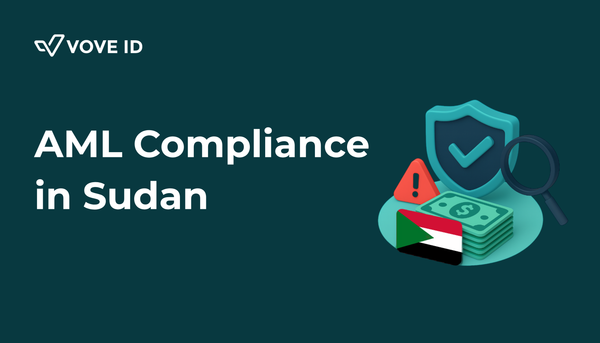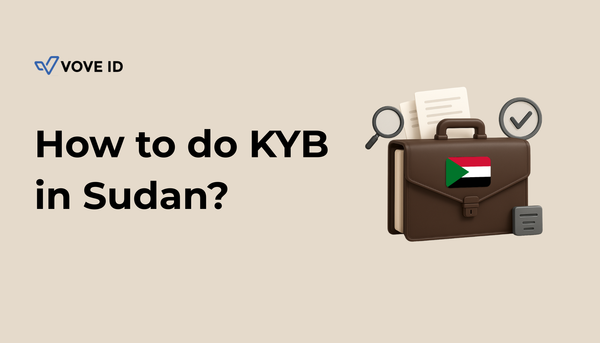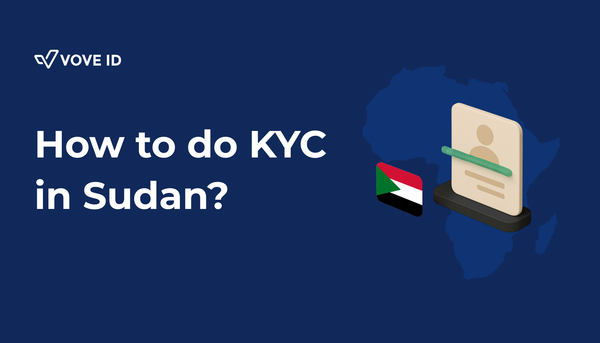KYC & AML Compliance in Canada: 2025 Guide for Regulated Businesses
Discover 2025 KYC and AML compliance best practices in Canada, including PCMLTFA and FINTRAC requirements, identity verification strategies, and digital onboarding solutions.

Why KYC & AML Are Essential in Canada Today
In Canada, financial crimes such as money laundering and terrorist financing pose growing threats to the financial system. Know Your Customer (KYC) in Canada is a vital tool for financial institutions to verify customers’ identities and prevent illicit activities. Estimates suggest up to C$100 billion may be laundered through Canada each year, per recent analysis from policy groups like the C.D. Howe Institute. Canada’s Anti-Money Laundering and Anti-Terrorist Financing (AML/ATF) Regime Strategy 2023-2026 emphasizes stronger compliance. Penalties for non-compliance can reach up to C$20 million for serious offenses under the PCMLTFA, depending on the violation category, or result in reputational damage. This guide outlines KYC requirements, steps, and strategies to ensure compliance in 2025.
What Is KYC and Why Is It Required?
KYC verifies customers’ identities—whether individuals or legal representatives of an entity—and assesses their risk profile and financial behavior to ensure legitimacy. It helps prevent money laundering, terrorist financing, and fraud, safeguarding businesses and Canada’s financial system. KYC is governed by the Proceeds of Crime (Money Laundering) and Terrorist Financing Act (PCMLTFA), enforced by the Financial Transactions and Reports Analysis Centre of Canada (FINTRAC).
FINTRAC’s guidelines require identifying beneficial owners (those owning or controlling 25% or more of an entity) and verifying their information. Non-compliance can lead to penalties, legal action, or loss of trust. KYC in Canada is critical for regulatory adherence, particularly with a 2025–2026 FATF evaluation approaching.
With a clear understanding of KYC’s purpose, the next section identifies who must comply.
Who Needs to Comply with KYC in Canada?
KYC applies to “reporting entities” under the PCMLTFA, including:
- Banks and credit unions
- Money services businesses (MSBs)
- Securities dealers and investment advisors
- Casinos and real estate brokers
- Factoring, cheque-cashing, and leasing firms fall under PCMLTFA as of April 2025 due to their vulnerability to money laundering, per the Budget Implementation Act, 2024, No. 1
Non-regulated businesses, such as tech firms, may adopt KYC voluntarily to mitigate fraud risks, especially in high-risk sectors like international trade or virtual currency dealings.
With clarity on who’s affected, the next step is understanding how businesses can comply.
Key KYC Requirements in Canada
To meet Canadian KYC standards, businesses must:
- Collect: Gather customer details like name, date of birth, address, and government-issued ID.
- Verify: Confirm identity using authentic sources like government records, credit reports, or digital KYC platforms.
- Screen: Check customers against sanctions lists, politically exposed persons (PEPs), and adverse media.
- Assess: Evaluate risks based on behavior, transaction patterns, or ties to high-risk jurisdictions, applying Enhanced Due Diligence (EDD) for high-risk cases, per FINTRAC’s risk-based approach.
- Monitor: Track transactions for suspicious activity, updating profiles as risks evolve.
- Store: Retain records for five years after a relationship ends, ensuring availability to FINTRAC within 30 days upon request.
Digital KYC tools streamline these steps for efficiency and compliance.
Canada’s beneficial ownership threshold under the PCMLTFA is 25%, while the EU’s AML Regulation may tighten to 15% by late 2025. The U.S. (via FinCEN) aligns with Canada at 25% but emphasizes deeper beneficial owner verification for legal entities under the Corporate Transparency Act.
With these standards in place, the focus shifts to implementation.
Challenges of KYC Compliance in Canada (and How to Overcome Them)
KYC compliance presents challenges:
- Regulatory Complexity: Rapid updates to the PCMLTFA and FINTRAC guidelines, such as new rules for factoring companies, create complexity.
- Data Accuracy: Inconsistent customer data, especially for global clients, hinders verification.
- Cost and Time: Manual processes are slow and expensive, burdening smaller firms.
- Client Experience: Lengthy onboarding can lead to customer drop-offs.
To address these challenges, financial institutions are adopting automated KYC platforms and ongoing staff training on regulations to streamline processes, reduce costs, and ensure accuracy. Compliance can be simplified by partnering with experts like VOVE ID, optimized for Canadian AML needs with features like API integration, real-time ID checks, and sanctions screening. Book a demo to meet 2025 KYC standards with confidence.
The following section explores strategies to optimize compliance.
Streamlining KYC Compliance in Canada: Best Practices
Optimize KYC with these strategies:
- Leverage Automation: Use digital KYC tools for real-time ID verification and sanctions screening.
- Screen for Risks: Check PEPs, sanctions, and high-risk jurisdictions to identify issues early.
- Train Staff Continuously: Keep teams updated on FINTRAC guidelines to spot fraud.
- Collaborate with Partners: Work with reliable KYC platforms for accurate data.
- Stay Informed: Monitor FINTRAC updates and the 2023-2026 AML/ATF Strategy.
Partnering with VOVE ID provides secure, Canada-tailored KYC solutions, ideal for fintechs and MSBs.
Reporting entities must retain KYC records for five years after a relationship ends. Suspicious transaction reports and large cash transaction records (C$10,000+) must be kept and made available to FINTRAC within 30 days upon request.
KYC Compliance Checklist for Canadian Businesses in 2025
Infographic Suggestion: Create a vertical timeline checklist with color-coded icons (blue magnifying glass for “Verify,” green checkmark for “Identify,” red eye for “Monitor,” gray lock for “Store”) in a clean font like Montserrat. Align each icon to a step in blue/green tones for scannability. Caption: “Canadian KYC Compliance Checklist 2025.” Offer as a downloadable “KYC Compliance Kit” PDF, including the checklist and a summary of PCMLTFA and FINTRAC compliance requirements, with alt-text: “Key steps for KYC compliance in Canada: verify identity, assess risk, monitor transactions, and store records.” Place here for visual impact and lead generation.
- Verify customer identity and details
- Identify and screen for PEPs and sanctions
- Conduct risk assessments for all customers
- Apply Enhanced Due Diligence (EDD) for high-risk cases
- Monitor transactions for suspicious activity
- Securely store KYC records for at least five years
Recent Canadian KYC Updates for 2025
📢 Key Developments:
- Factoring and leasing firms added to PCMLTFA scope (April 2025).
- Increased scrutiny on crypto dealers under FINTRAC regulations.
- Emphasis on RegTech adoption per the AML/ATF Strategy 2023–2026.
Can non-regulated Canadian companies skip KYC?
While not legally required, they often adopt KYC to reduce fraud risks in high-risk sectors.
How does KYC handle virtual currency?
Entities registered as dealers in virtual currency (DVCs) under FINTRAC must verify client identities and report transactions exceeding C$10,000, in line with existing regulatory obligations.
KYC Trends in Canada for 2025
KYC is evolving rapidly. AI-driven tools are improving identity verification accuracy, while real-time monitoring systems flag suspicious activities instantly. According to projections from Deloitte and Accenture, adoption of RegTech solutions among Canadian reporting entities is expected to grow by 20–30% through 2026, driven by AI, automation, and FATF pressure. The 2023-2026 AML/ATF Strategy emphasizes RegTech solutions to reduce manual workloads. FINTRAC’s focus on new sectors like factoring companies (via the Budget Implementation Act, 2024, No. 1) and virtual currency dealers highlights the need for robust compliance ahead of the 2025–2026 FATF evaluation.
Wrapping Up
KYC in Canada ensures compliance with the PCMLTFA and FINTRAC regulations, protecting businesses from financial crime. Digital tools and proactive strategies streamline the process. Explore how VOVE ID can help you stay ahead of 2025 compliance mandates. Book a Demo with VOVE ID.




